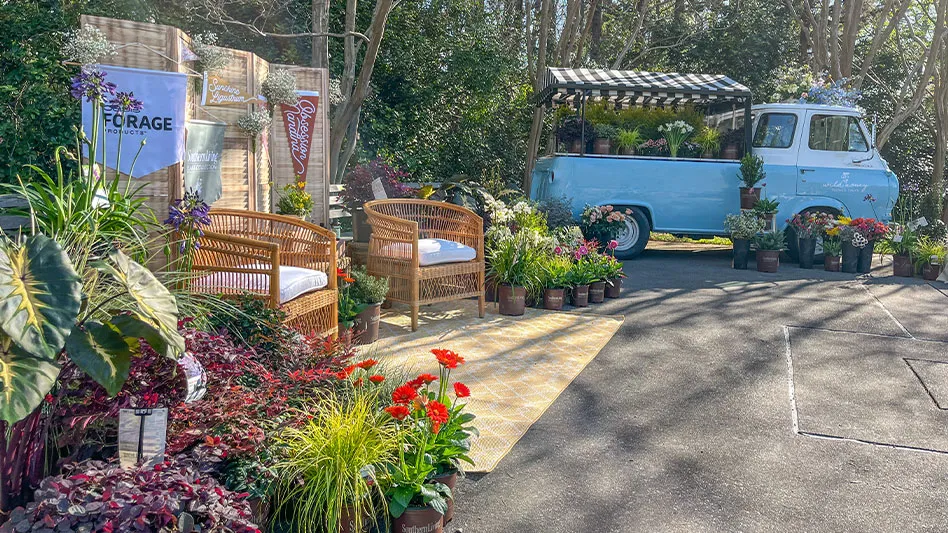
When I read the book “Riding the Blue Train” many years ago, authors Bart Sayle and Surinder Kumar struck a chord in me by defining what I always knew was possible — strategic alignment.
The coauthors refer to strategic alignment as a “Line of One Culture”: A solid and unified force of people and energy focused on accomplishing the same mission.
I couldn’t — nor would I attempt to — say it any better myself!
However, the process — and people — needed to arrive at that result takes effort, enthusiasm, energy and exceptional leadership. It also takes a plan. That’s the reason I’m writing this and presumably why you’re reading it. So, I would like to introduce you to exactly that — a plan combining people and energy, focused on accomplishing great things…together!
But any plan worth executing needs to be measurable. And any team that is executing that plan needs to be accountable. And any leader driving the plan needs to be responsible. So, how do you put it all together?
You engage in “The Great Game of Business!” (We can call it GGOB for short.)
Based on a book written by Jack Stack many moons ago, it tells the story of a company on the verge of collapse. You see, the top-down leadership approach wasn’t working. There was a need for a dramatic “LeaderShift.” The solution? Leveraging the “wisdom of the crowd” and changing the mindset of employees to begin thinking like owners — and the result was a great turn-around story. But not only were employees thinking like owners; they were acting like owners, too.
In fact, when employees think like owners, the entire culture shifts. You are inviting the employees to have a stake in the outcome.
Begin with basic financial literacy
When working with my clients to implement GGOB, we start by placing a dollar amount on a flip chart — a number representing a financial value related to the business. That number is usually somewhere between $7,500 and $25,000, based on the size of the operation.
I then tape a $20 bill next to the number on the flip chart and say: “Anyone who can tell me the significance of this number gets to keep the 20 bucks.” I’m sorry to report that I usually keep the $20.
After multiple informed and thoughtful guesses, I let them know what that dollar amount actually represents — the cost to turn on the lights each and every day. That big number is a combination of all the guesses the employees offer wrapped up in a pretty darn expensive red bow of “wake up and smell the coffee, people!”
Most employees (and I must say many owners) are not aware of this what I call “critical number” required for the business to break even each and every day. That’s because the employees see all the plants, fancy equipment, trucks, land and infrastructure and think the owners must be rolling in money.
But revealing what the number means is a moment of truth that helps employees realize how very important running a profitable business is. It helps them see how immensely vital cost management and revenue generation are to the success of the business, and how much of an investment the team is to make all that happen.

Getting employees to think like you
After we reveal the “lights on” cost, we then share the amount of pennies left over after every dollar is earned. The room goes silent. And it is at that very moment that I introduce the idea of an owner mindset.
Every time you walk by and see the heat on in the greenhouse and the fans on as well, I tell them, think like an owner: That’s money getting literally sucked out of the business.
Every time a truck returns with plant material still on it, I say, think like an owner: That’s one more time we have to move it, water it, care for it, along with reputational damage from our clients.
Every time a customer buys just one plant and not the fertilizer, I stress to them, think like an owner: That plant needs to survive, and there was a missed revenue opportunity.
Every time a piece of equipment breaks or is left out in the rain or left on a job site, I implore, think like an owner: Replacement costs are far more expensive than maintenance costs.
You get the picture.
When you begin to change the mindset of the employee and create a culture of ownership, it is the very first and necessary step toward an invincible team as well as a “Line of One Culture.”
The rules of the Great Game of Business
The GGOB centers around a “critical number.” It’s a singular outcome everyone understands and can effectuate, and everyone can be a part of something bigger than themselves. That can be any number you choose, as long as it’s one your staff understands they have a direct ability to influence. The number can be anything: average review ratings on review websites, sales of specific products or services, or the number of items purchased at a single transaction. Everything builds from there.
The four pillars of GGOB are education, communication, engagement and “Play to Win!”
The three intersecting elements of GGOB are know and teach the rules, follow the action and keep score, and provide a stake in the game.
Each of these principles and pillars is vital to the momentum and motivation of the team and must be fueled by a fully engaged leader or leadership team. It’s one of those systems in which you are either all in or you are not. I choose “all in” every time!
Let me introduce you to two businesses that have fully embraced the model and are seeing dramatic results and engagement by simply being open to sharing the numbers and encouraging their employees to learn about how to run a business as an owner.
DeWayne’s: Selma, North Carolina
Owners DeWayne and Tina Lee accepted the challenge of creating a culture of maximum engagement with open book management to the level of comfort that worked for them. DeWayne’s is an amazingly successful garden center that also offers a wide range of other revenue centers, including men’s and women’s boutiques, The Sweet Shop, a gift shop and the world-famous Christmas Land. (You must visit and tell them John sent ya!)
The critical number we chose to focus on for the fourth quarter of 2023 is the units per transaction. The average number of items customers were purchasing on each visit was 3.7, and we have set the goal of raising it by one, to 4.7 items per transaction.
Each department went to work focusing on one specific item that they would promote and improve upon over the previous year: wind chimes in the garden center, an extra scoop of ice cream at The Sweet Shop, books in Christmas Land or bug spray in the customer service department (who, incidentally, won the mini-game that month).
Since the start, more than 100 associates have been fully engaged in a fun competition of improvement. And the fact they have a stake in the game has fundamentally changed the entire culture of the workplace.
Importantly, DeWayne’s has a company-wide intranet platform that tracks and reports employees’ efforts weekly, along with videos and digital scoreboards to keep the fun and competition going. This is where communication and following the action come into play. (Visit yourgroupspace.com to see a sample of what DeWayne’s is doing).
With the GGOB in full swing at DeWayne’s, the needle is at 4.26 UPT, and the team is well on its way to getting to the critical number of 4.7 — and that’s within the first month of implementation.
But DeWayne’s is just one example of the kind of shift that can occur when you play the GGOB. So far, for clients who fully embrace the GGOB culture, sales and profitability have grown exponentially. One client jumped from 1.5% to 11% in just 18 months, while another tripled its sales of a selected vendor product within 30 days.
Accelerated sales growth and a fully engaged team are outcomes worth the investment of time and talent.

Forest Lake Greenhouses: Florence, South Carolina
Travel a little farther south from DeWayne’s on 1-95, and you reach Forest Lake Greenhouses, a garden retailer and grower that has also adopted the culture of GGOB. Owner Luke Venable was already a fan of the book, so introducing the concept and culture to his team was an easy transition. We met with the senior leadership team for a strategic planning session. Remember: education, communication and engagement are key.
Once everyone was on the same page, we jumped right into the critical number: profitability.
Because Forest Lake Greenhouses (a member of The Garden Center Group) has a combination of both growing and retail businesses wrapped into one single enterprise, having both divisions working on individual plans to attack profitability was a nice challenge. After all, each of them, in their own unique way, affects that critical number.
For the retail garden center team, a focus on driving “one more item” to each purchase and keeping a watchful eye on labor management is key. Meanwhile, the growing team can focus on reducing shrinkage (dump/waste) as well as energy use and productivity.
The full Forest Lake Greenhouses team agreed that driving an 8% profit margin was the baseline for success. That 8% was the critical number to sustain and grow the business, pay employees fairly, invest in infrastructure and save for tougher times. The result is that each of them, as employees, is now hyper-focused on that outcome.
The team also agreed that the steps they would take would involve two other “8s”— an 8% increase in sales and an 8% reduction in their labor to sales ratio (reducing by 2 percentage points). By combining those two efforts with mini-games to drive each of them, the outcome would be an 8% profit margin. We refer to this as the Three 8s!
Now, here’s where it gets really, really cool.
Forest Lake Greenhouses decided that if the enterprise, as a whole, improves beyond 8%, the team and the company evenly split the gain — referred to as “gain sharing.” When they improve to 9%, the team of employee-owners will share in the gain. If they get to 10%, the same holds true, with a 50/50 share offered by the ownership.
We are setting our sights on 12% profitability in 2025, with a wonderful opportunity for the business to grow and the employees to share in that growth. They will be committed to holding each other accountable, thinking like owners and having daily huddles, weekly meetings, monthly mini-games and department updates, as well as quarterly “state of the union” sessions with the entire staff. This is known as the cadence of communication.
The team at Forest Lake Greenhouses, like DeWayne’s, has a customized intranet platform to educate, communicate, engage and “play to win!” The team knows where to go to get all the updates, training, horticultural knowledge and scoreboards to get in the game. All of it works to create that culture of ownership, measurement and accountability while providing a stake in the game.
I can’t wait to see what the outcome will be for this team of employee-owners. I believe this is the model of the future for any business wanting to create a line of one culture, where employees are fully engaged in the success of the business, think like owners, share in the success and learn the basics of financial literacy while they work.
The old joke was “to make a small fortune in the green industry, start with a large fortune.”
Now, it’s not a joke. To make a large fortune in the green industry, invest in your committed employee-owners, leverage the wisdom of the crowd, build an invincible team and a culture where they know and teach the rules, follow the action, keep score and provide a stake in the game.

Explore the October 2023 Issue
Check out more from this issue and find you next story to read.
Latest from Garden Center
- Content Marketing Through Storytelling: Sharing Your Horticulture Brand’s Journey
- Proven Winners introduces more than 100 new varieties for 2025
- Weekend Reading 5/10/24
- The Family Business, Part 2: Agreeing (and disagreeing) on capital investments
- Registration opens for Darwin Perennials Day
- Weekend Reading 5/3/24
- Weekend Reading 4/26/24
- Smith Gardens assumes operations of Skagit Horticulture





